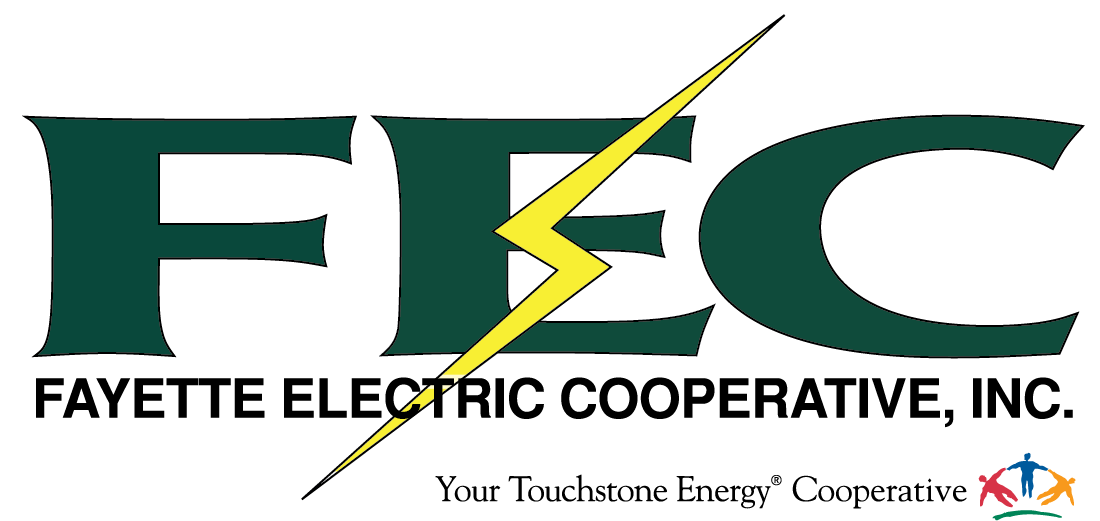GENERATOR SAFETY
Portable generators are a godsend during a prolonged electrical outage. Fayette Electric urges its Members to exercise caution when operating portable generators.
Avoid ‘Backfeeding’
- Never try to power the house wiring by plugging the generator into a wall outlet, a dangerous practice known as “backfeeding.” It sends power from your house back through electric lines. Safely connecting a generator to your house wiring requires the help of a professional elec- trician. Backfeeding could ruin appliances, cause a fire, or even injure a co-op employee who might be working on nearby lines. If you must connect the generator to the house wiring, have a qualified electrician install a double-pole, double-throw (DPDT) transfer switch.
- Plug appliances directly into the generator, or use a heavy-duty, outdoor-rated extension cord that is rated (in watts or amps) at least equal to the sum of the connected appliance loads. Check that the entire cord is free of cuts or tears and that the plug has all three prongs. Never remove the grounding pin.
- Keep the generator dry and do not use in rainy or wet conditions. Operate it on a dry surface under an open, canopy-like structure. Make sure your hands are dry before touching the generator.
- For power outages, permanently installed stationary generators are better suited for providing backup power to the home.
Danger from Carbon Monoxide Gas
Never use a generator in enclosed or partially enclosed spaces. Generators can produce high levels of carbon monoxide gas (CO) very quickly, which you cannot smell or see. Even if you can’t smell exhaust fumes, you may still be exposed to CO. If you start to feel sick, dizzy or weak while using a generator, get to fresh air right away. The CO from generators can rapidly lead to full incapacitation and/or death.
If you use a portable generator you should install CO alarms, test them frequently, and replace dead batteries.

